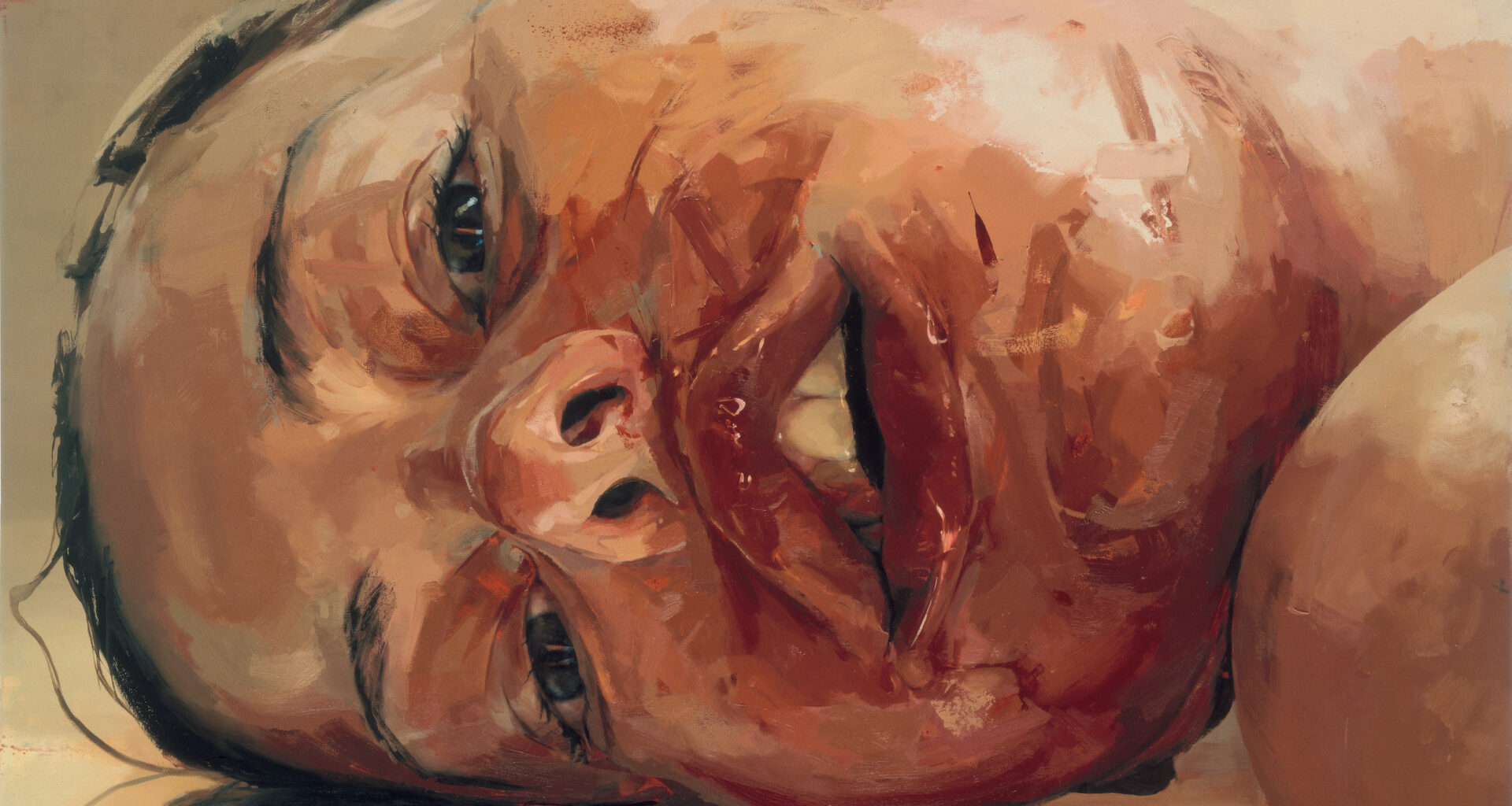LONDON — Of all the YBAs (Young British Artists) of the 1990s — including upstarts like Damien Hirst and Tracey Emin, mouthing off petulantly to the art establishment with dead livestock and unmade beds — it is Jenny Saville who has been most entrenched in the history of art. It is also Saville who can most convincingly claim to be Britain’s greatest living painter since the death of Lucien Freud (sorry, David Hockney). The artist’s superb draughtsmanship skills, informed by absorption and understanding of the Old Masters, are combined with a painterly technique that manipulates its plasticity for all its worth. (Ironically, Tracey Emin is a professor of drawing at the Royal Academy despite having no capacity for drawing.) Saville’s style is as complete and significant as that of Freud.
It is hard to overestimate the impact of Saville’s early works on British contemporary painting. Her paintings often disappear into the most discerning private ownership. Those in public collections are the rare anomaly in her current survey, The Anatomy of Painting, at the National Portrait Gallery. As a result, some of that impact is recreated for those viewing her art for the first time. Enormous in scale, her uncomfortably close cropped depictions of women’s faces and nude bodies abound in the joy of painterly modeling, from bare — nude — patches of canvas to her swift, thick, viscous slathers, to dappled dry brush blends. The large scale alone may shock people accustomed to viewing only reproductions on screen. The distribution of muted and contrasting tones is sophisticated. In short, there is a wealth of virtuosic brushwork to drink in.
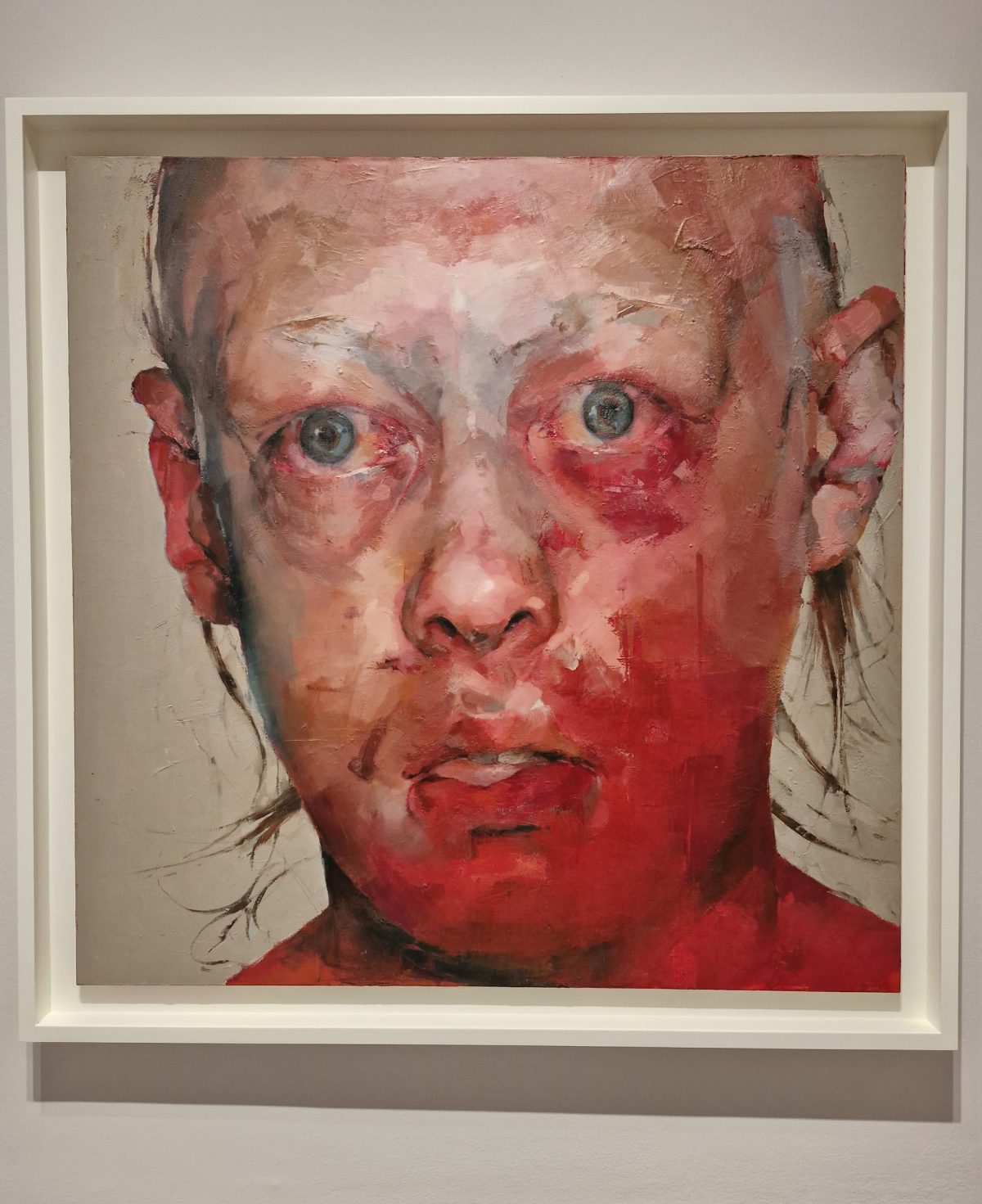
Jenny Saville, “Figure 11.23” (1997), oil on canvas
Considering the painterly bombast, it is perhaps a pedantic complaint that the National Portrait Gallery has mounted an exhibition that has not a single “portrait” in it. We are given only a few of the sitters’ identities, and neither the museum nor Saville expound any particular reason for portraying them, nor any painter-sitter relationships to speak of. Hers is an academic interest with only perfunctory gestures toward body image issues, and pieces explicitly covering gender identity are absent. In “Plan” (1993), one of the exhibition’s key works, Saville contours the nude flesh like ordinance survey map terrain, while “Ruben’s Flap” (1998–99) references the fleshy folds favored by the Dutch master, updated to the “real” folds of contemporary unidealized body types. In her most color-saturated rendering of flesh, “Figure 11.23” (1997), she deploys flat red more in the Renaissance discipline of cangiante – using depth of color rather than muted tones for shade – rather than realistically depicting blood.
Similarly, a fantastic sequence of mother and child images that reference both Pietas and Maestas from Michelangelo, with bulbous children bending toward us, entasis-style, echo distinctly his Madonna of Bruges or the soft sfumato of Raphael, reimagined in colored pencil. Saville fails, though, to wear her influences on her sleeve when channeling her love for de Kooning into her compositions from the mid to late 2010s. Her attempts to break down nudes into intertwining layers of limbs and squiggles, shattering them with de Kooning-like surface articulation, feel forced, and obscure her gift for three-dimensional modeling. “Out of one, two (symposium)” (2016) nods to Cy Twombly simply by overlaying the nude figures with scribbles. Her academic attempts at abstraction — the opposite of Renaissance Old Master figure modeling — seem to be at the expense of her work’s soul.
Arguably, it is the conventional “portraits” — simply framed faces, rendered on an enormous scale — that are strangely anaemic (notice duplications of the same portrait with varying degrees of effort) and, more recently, louder in tone yet quieter in effect. The final room should be renamed “rainbow filter,” for here the palette is split into the entire spectrum, as rainbows are projected onto the visages, rather like a social media filter. For all the power of her early work, perhaps the oversaturated digital world demands that she dial her painterly tropes to eleven to stay relevant: colors are unnaturally zingy; oil sticks are deployed in vigorous strokes, creating a sense of “angry” brushwork; collages are more disjointed than previous ones. This is where some commentary on the sitters and her relationships with them would come to the (curatorial) rescue and provide some depth: Who are these people, and why does she paint them if not to satisfy an ever-demanding clientele of private collectors?
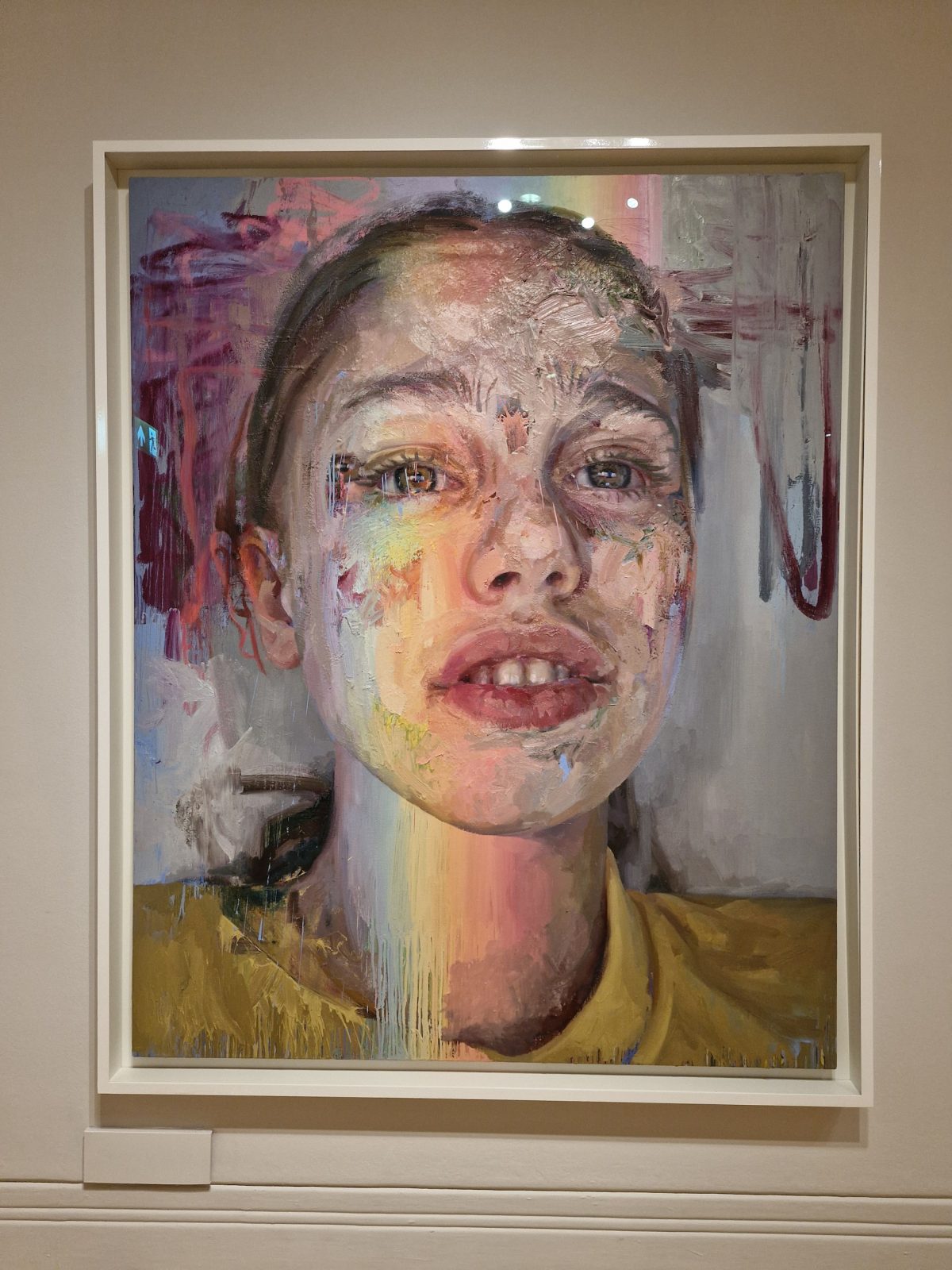
Jenny Saville, “Messenger” (2020–21), acrylic and oil on canvas
In 2020, Saville discussed her myriad painterly techniques and influences on a fascinating episode of the A Brush With podcast. She detailed her extensive reading of poetry, Goethe, and myths, as well as the impact of visiting artists’ studios. De Kooning apparently inspired her current set up of two giant glass palettes side by side to work from simultaneously in her studio. National Portrait Gallery curator Sarah Howgate, working closely with the artist, communicates little of this; in fact, Saville’s gallery, Gagosian — the largest name in the official list of the show’s major supporters — looms ominously, while Howgate isn’t mentioned anywhere in the wall texts, as the captioning throughout follows the “here’s the title, here’s the year, here’s the owner; good luck to you” school of commercial gallery curating.
It is unthinkable that no mention is made of the cultural import in the UK of her collaboration with Welsh rock band the Manic Street Preachers for their 1994 album The Holy Bible, and the dichotomy of Saville’s fleshy nudes and the band’s lyrics addressing body dysmorphia and eating disorders. Readers of my reviews will well know my frustration with overenthusiastic captioning and over-contextualizing, but this is the total opposite. Throw the audience a bone, please.
Furthermore, the museum’s decision to list major benefactors and foundations, but not the curator, on the main web page and in the show may indicate the powers at play, and perhaps why Saville has never had a survey show outside a commercial gallery until now. Museums are at the mercy of ever-decreasing government funding, and we are seeing an increase in collaborations with commercial movers and shakers — who own most of Saville’s work anyway — to get something like this mounted. This exhibition is an absolute must-see, for the incendiary art and because it’s a microcosm of the commercial art process: Young artists’ work is acquired by by Saatchi; it remains a consistent hot-ticket purchase among private players; the artist receives a historicizing retrospective in a major institution with token curatorial gloss. Et voila.
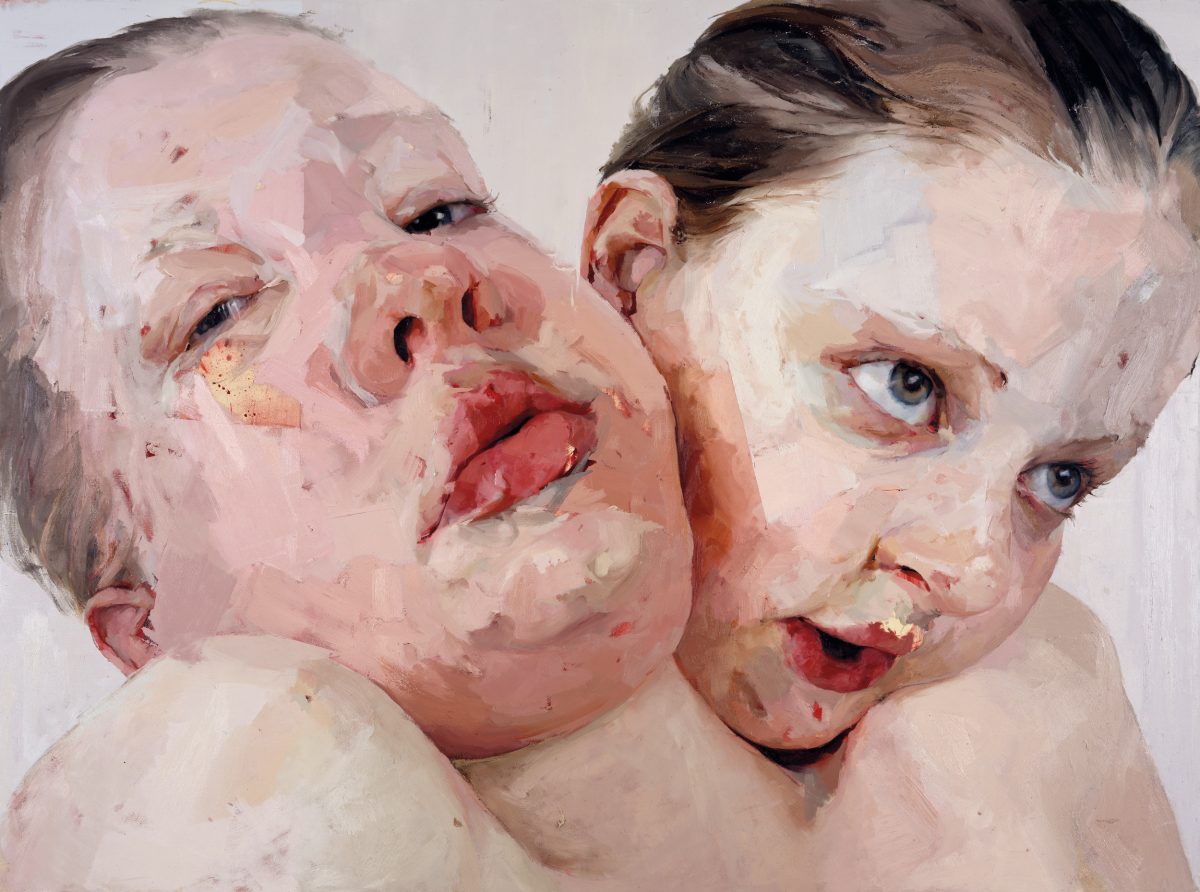
Jenny Saville, “Hyphen” (1999), oil on canvas; Private Collection (courtesy Gagosian © Jenny Saville)
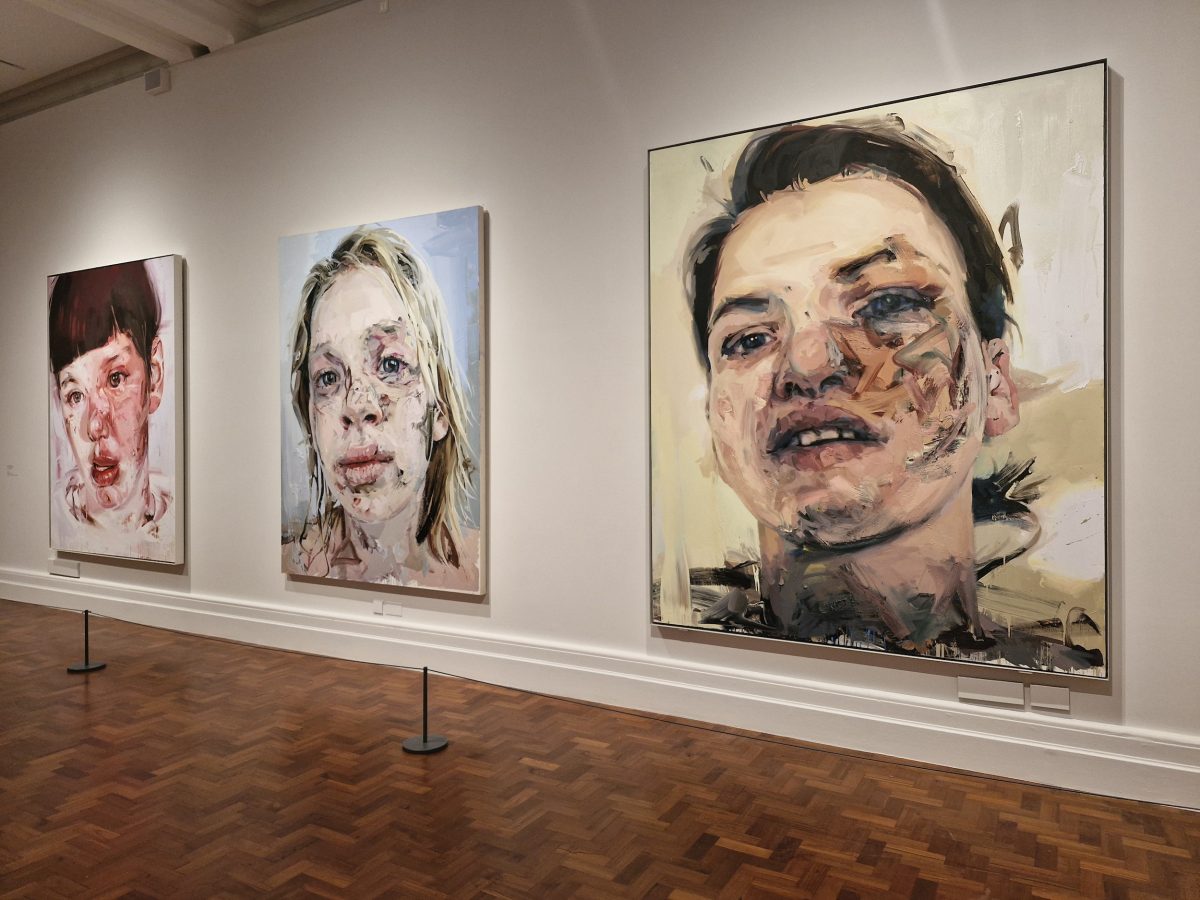
Installation view of Jenny Saville: The Anatomy of Painting at the National Portrait Gallery, London
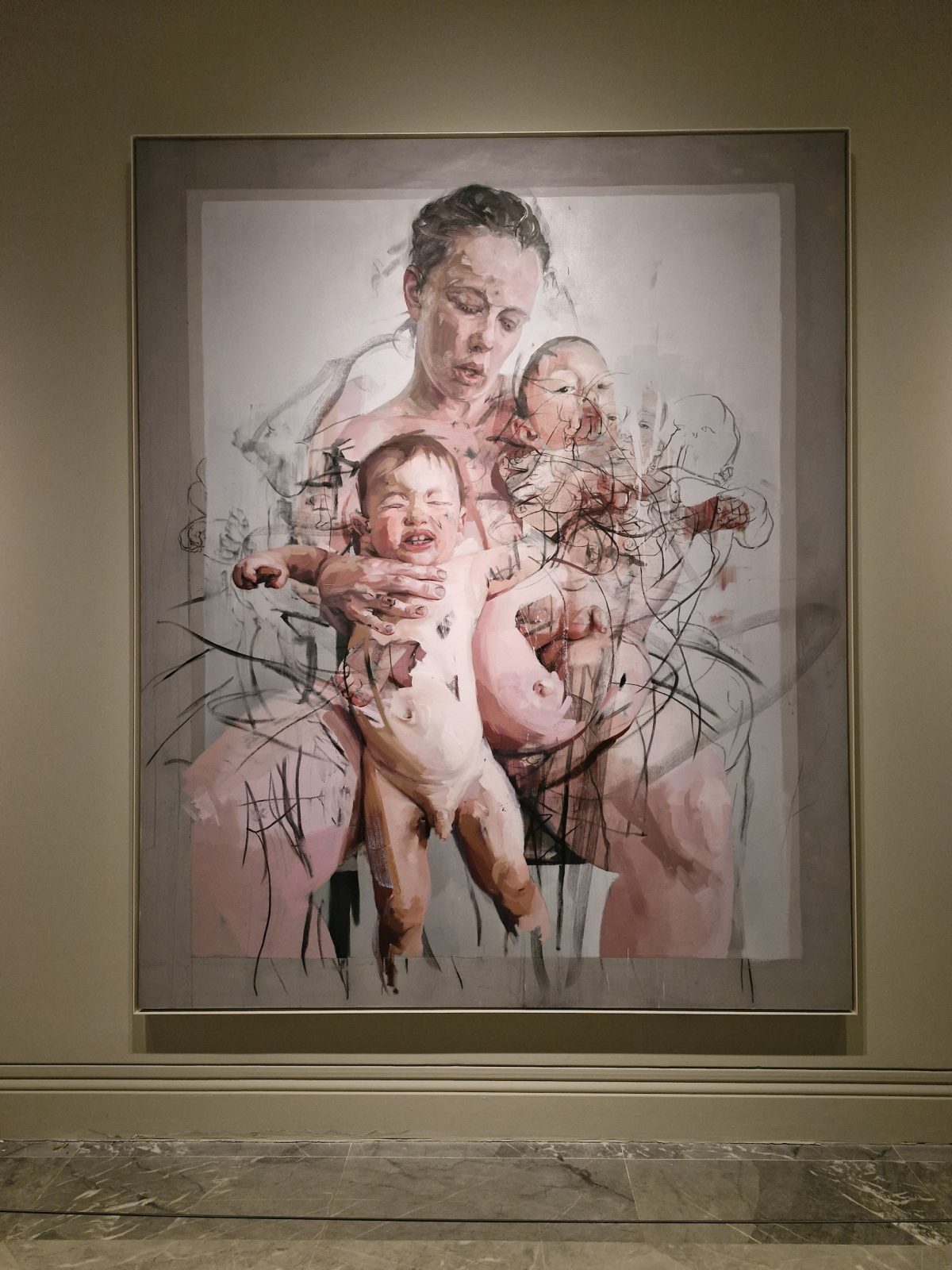
Jenny Saville, “The Mothers” (2011), oil and charcoal on canvas
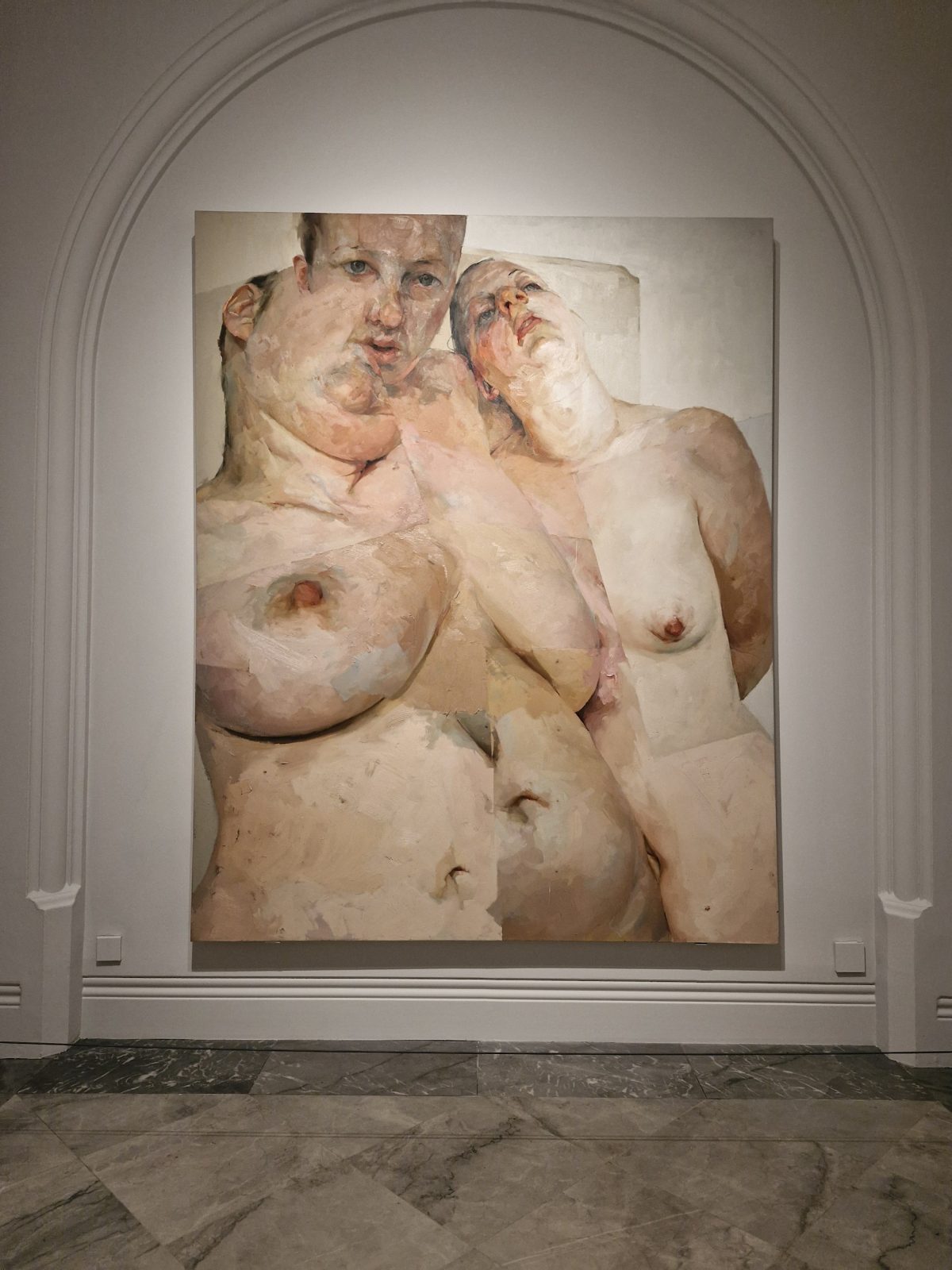
Jenny Saville, “Ruben’s Flap” (1998–99), oil on canvas
Jenny Saville: The Anatomy of Painting continues at the National Portrait Gallery (St Martin’s Place, London, England) through September 7. The exhibition was curated by Sarah Howgate.

